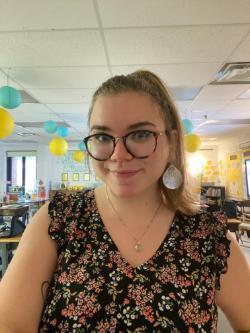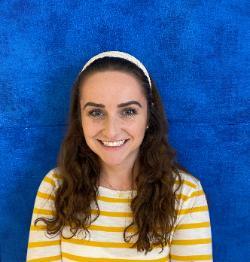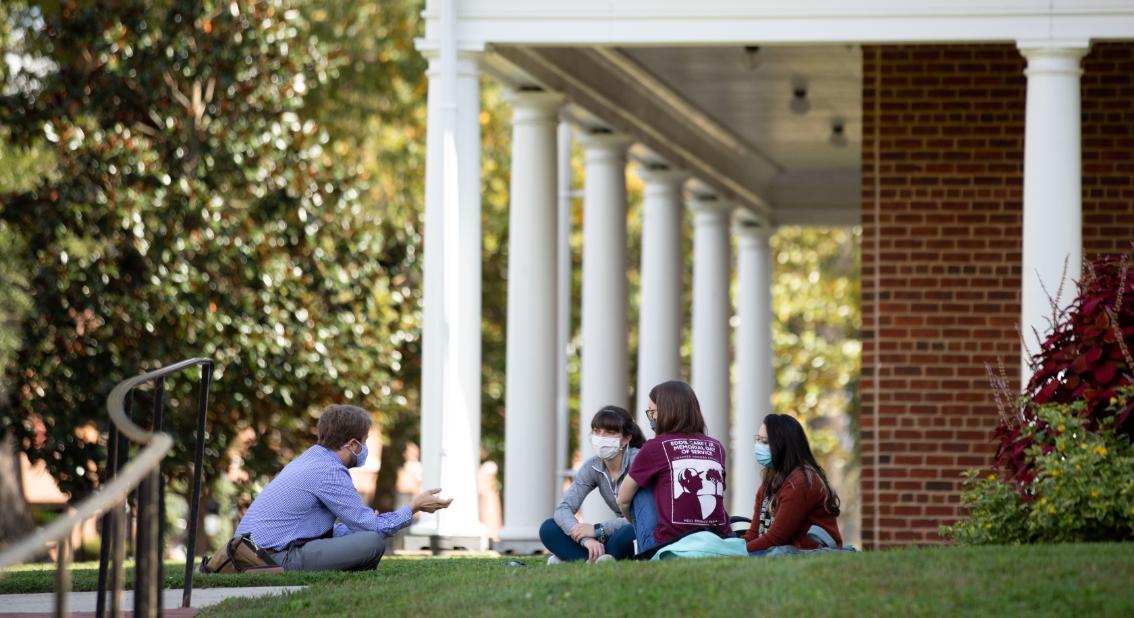Thanks to a collaboration between a Longwood faculty member and two of his former students, English and language arts teachers will soon have at their fingertips a wealth of practical advice for the most effective use of remote teaching/learning technologies.
Two books—one for kindergarten and elementary school teachers, the other for those teaching grades 6-12—are currently in development, with publication expected in time for the start of the 2021-22 school year.
Sean Ruday, associate professor of English education, and Longwood alums Jenn Cassidy ’19 and Taylor Jacobson ’19 signed the contracts for writing for the books in September.
I immediately thought of Jenn and Taylor. They had worked with me on some research projects when they were students and after they graduated. They’re both great teachers and great writers.
Sean Ruday, associate professor of English education Tweet This

Ruday said he immediately thought of Cassidy, an eighth-grade English teacher, and Jacobson, who teaches fifth grade, when his publisher approached him about writing the books as the sole author.
“I knew I could write about what the research says about remote English instruction, but I also knew the strongest books would include the experiences of teachers doing it right now,” he said. “I immediately thought of Jenn and Taylor. They had worked with me on some research projects when they were students and after they graduated. They’re both great teachers and great writers.”
The books will cover best practices in teaching English and language arts and how to successfully adapt them to remote learning, said Ruday, who’s written more than 10 books on English and language arts instruction.
Jacobson, who teaches at Glenwood Elementary in Virginia Beach, said there’s a definite need for this type of resource.
“One hundred percent of teachers—at least those who used to teach face to face—are struggling in some way with remote instruction,” she said. “This is not easy. I lose sleep every night worrying whether I’m doing enough for my kids, and I know most teachers feel the same way.”
This is not easy. I lose sleep every night worrying whether I’m doing enough for my kids, and I know most teachers feel the same way.
Taylor Jacobson ’19 Tweet This

Cassidy, who teaches at Oscar Smith Middle School in Chesapeake, agrees that remote learning is a significant adjustment for teachers—and for students.
“Students are flexible and forgiving, fortunately for us,” she said, “but it’s difficult to learn through the Internet. Teachers, however, are used to adjusting. They are constantly studying and evolving as society, technology, their students and best practices change. These books will provide teachers with strategies and models they can implement in their own classrooms.”
Some of the practical advice in the books will focus on how to effectively use specific technologies for remote learning. For example:
- Using ReadWorks for guided reading and small group discussions
- Using Flipgrid, a video platform, to allow students to share the books they’re reading with their classmates
- Using the chat box function in Zoom for students to share short responses to questions
- Using Google docs to allow students to share longer, more complex responses during a class discussion
Ruday said the input from Jacobson and Cassidy will give the books “credibility and make them more interesting to read. It’s so important when one writes a resource or a book for teachers to include the classroom perspective,” he said.
Jacobson said her classroom experiences and those of her colleagues has provided her with plenty of material.
Now that we’ve all utilized different forms of remote learning, some schools will continue to implement them in certain situations for a variety of reasons.
Sean Ruday, associate professor of English education Tweet This
“I can’t even count how many times I’ve heard an amazing idea from another educator that I would never have thought of,” she said. “As one of my first mentor teachers said, ‘Teaching is about stealing, tweaking and educating.’ Teachers do best when they can collaborate and work together.”
Ideally the books would be available now, Ruday said, but he added that the books will be valuable even after the safety measures of the Covid-19 pandemic.
“Even when schools are totally able to reopen, some of these ideas and practices will stick. Now that we’ve all utilized different forms of remote learning, some schools will continue to implement them in certain situations for a variety of reasons.”
But Ruday isn’t waiting until the books are published to share their content with current Longwood students who are preparing for careers as teachers. One of his classes this fall included a large number of students who will be doing their student teaching in the spring, when teachers will likely still be teaching remotely.
“I brought a lot of the ideas that we’re discussing in these books in that class,” he said, adding that he incorporated some of the ideas into the classes he taught remotely this fall. “I’ll continue to adapt a lot of the ideas in these books to working in a college setting.”



Leave a Comment